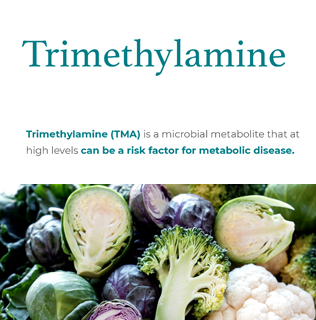How can gut microbiome testing change the way you practice?
Author: Dr Ken McGrath & Krystyna Sullivan
May 2021

As a healthcare professional, you already appreciate the power of information and the value of testing to better understand your patients’ health presentation.
Now, after a decade of seeing great advancements in gut microbiome analysis technology, led by Microba’s co-founders, Professors Phil Hugenholtz and Gene Tyson, it has led to broader availability of the latest scientific evidence right here in Australia.
With access to more microbiome insights than ever before, science is showing that guiding your patient’s health journey using a more tailored approach is key and delving into their unique gut microbiome using the latest analysis technology is a valuable skill that can further assist your clinical decision-making.
Research shows that the gut microbiome of individuals with various health conditions is different compared to those of healthy people.1 Therefore, testing microbiome biomarkers such as microbial diversity, the presence of certain microbial species, and the production of certain metabolites (functional potential)2,3 using shotgun metagenomics, can be a very useful clinical tool.
So, how are practitioners using metagenomic testing in clinic?
Interested to discuss metagenomic gut microbiome analysis further? Contact the healthcare team.
The clinical application of metagenomic testing
From looking at what metabolites your patient’s gut microbiome is producing, to which prebiotics will best fuel health-promoting gut bacteria, meaningful insights such as these are found in the Insight™ microbiome report and can better inform your patient evaluations and clinical recommendations.
Examples of valuable report insights include:
- Microbial diversity level or the Shannon Diversity Index is the standard measurement of both the different types of species in your patient’s gut and how evenly they are distributed. Microbial diversity is an important biomarker for microbiome health, where low diversity has been associated with various health conditions, including inflammatory bowel disease, type 1 diabetes, obesity, and more4-7. Discover whether your patient’s diversity could be contributing to their health presentation, or whether there are any microbial overgrowths. You can then use this information to inform lifestyle and dietary interventions, such as recommending more diverse eating habits to boost microbial diversity8.
- Human DNA abundance is typically at low levels in healthy stool. If human DNA is showing at elevated levels, it may be an indicator of gut inflammation or more serious GI concerns. You may wish to consider further investigation for inflammatory markers or exploratory testing and review potential microbial metabolites that may contribute to GI inflammation, such as ammonia.
- Fibre digestion potential is an important function of the gut microbiome, as it is directly linked to the growth of beneficial fibre-degrading bacteria9. A similar or high potential to break down fibre compared to our ‘healthy cohort’ is considered beneficial to support the production of short chain fatty acids (SCFAs), such as butyrate. Your patient’s ability to digest fibre can inform dietary interventions and may be an indicator of whether fibre intake may be inadequate.
- The food frequency questionnaire (FFQ) is a valuable practitioner tool, developed by Microba microbiome experts and is unique to Insight™. Your patient’s FFQ results summary can assist your evaluation of their eating habits by providing an overview of their dietary history and how they are fuelling their microbiome. Through these insights, you can identify the beneficial patterns your patient already has in place, as well as areas they can improve to promote optimal microbiome health and general wellbeing.
Discuss important report insights with a Clinical Application Specilist. Book Now.
Another key aspect of your patient’s Insight™ report is understanding their microbiome’s functional potential or ability to produce metabolites. These microbially produced substances can interact with the immune, metabolic, and nervous systems and have been linked to various health conditions10. Some metabolites promote good health while others promote inflammation and disease.
Examples of key metabolites in the Insight™ report include:
- Lipopolysaccharide (LPS), a pro-inflammatory compound, can trigger immune activation and contribute to systemic inflammation11. The hexa form of LPS known as Hexa-Lipopolysaccharide (Hexa-LPS), is most noted to have strong immunostimulatory potential by binding to TLR4 immune cells and activating the inflammatory cascade12. Hexa-LPS absorption is increased in the presence of saturated fats. Therefore, a high potential to produce Hexa-LPS can inform dietary interventions, such as recommending your patient decrease saturated fat intake and maximise their omega-3 fatty acid and fibre intake13,14.
Find out more about Hexa-LPS in our Hexa-LPS Clinical Reference Guide.
- Butyrate, a key Short Chain Fatty Acid (SCFA) which is required for regular gut cell function. A low potential to produce butyrate is considered unhealthy and can contribute to inflammation, poor gut barrier integrity and other negative health consequences. This insight can inform dietary interventions, such as recommending your patient increase their resistant starch and pectin intake, which are precursors for butyrate production14,15.
- Trimethylamine (TMA), when produced at high levels, is linked to cardiometabolic diseases and may indicate an increased risk of several health conditions including cardiovascular disease, type 2 diabetes, inflammation, and hypertension16. This insight can inform dietary interventions, such as recommending your patient decrease their red meat intake or increase their cruciferous vegetable intake17-19.
Find out more about TMA in our TMA Clinical Reference Guide.
Summary
As an integrative health professional and/or dietitian you are well placed to utilise gut microbiome analysis in clinic because you can understand the importance of gut health in your patient’s presentation. You also have the tools to support your patient with key dietary and lifestyle changes tailored to improve their unique microbiome.
Metagenomic gut microbiome analysis provides a holistic view of the gut microbiome, not merely the presence of specific bacteria. With gut microbiome diversity being viewed as a key indicator of health and disease prevention, a detailed understanding of your patient’s microbiome can assist with your recommendations for supporting the diversity of their gut.
Assessment of the functional potential of your patient’s microbiome allows you, as a practitioner, to have a targeted and personalised approach by addressing key metabolites that may contribute to your patient’s health concerns. Metagenomic gut microbiome analysis delivers insights into potentially harmful metabolites, how to address the effects of these and encourage beneficial metabolites associated with positive health outcomes and disease prevention.
About the author

Dr Ken McGrath
Dr Ken McGrath is the Clinical Solutions Manager with Microba. He has a PhD in Molecular Pathology from the University of Queensland, with a research background in microbial community genomics, including human and environmental microbiomes and metagenomics analysis. Ken has also been a part of several international microbiome research projects.

Krystyna Sullivan
References:
- Marchesi JR, Adams DH, Fava F, et al. The gut microbiota and host health: a new clinical frontier. Gut, 2016; 65:330-339. https://doi.org/10.1136/gutjnl-2015-309990
- Valdes A M, Walter J, Segal E, Spector T D. Role of the gut microbiota in nutrition and health BMJ 2018; 361:k2179 https://doi.org/10.1136/bmj.k2179
- Sommer F, Anderson J, Bharti R, et al. The resilience of the intestinal microbiota influences health and disease. Nat Rev Microbiol, 2017; 15, 630–638. https://doi.org/10.1038/nrmicro.2017.58
- Alam, M.T. Amos, G.C.A. Murphy, A.R.J. Murch, et al. Microbial imbalance in inflammatory bowel disease patients at different taxonomic levels. Gut Pathology, 2020; 12(1). https://doi.org/10.1186/s13099-019-0341-6
- C Manichanh, L Rigottier-Gois, E Bonnaud, et al. Reduced diversity of faecal microbiota in Crohn’s disease revealed by a metagenomic approach. Gut, 2006; 55(2), 205-211. https://doi.org/10.1136/gut.2005.073817
- Hui Han, Yuying Li, Jun Fang, et al. Gut Microbiota and Type 1 Diabetes. International Journal of Molecular Sciences, 2018; 19(4), 995. https://doi.org/10.3390/IJMS19040995
- Lee, C.J., Sears, C.L. and Maruthur, N. Gut microbiome and its role in obesity and insulin resistance. Ann. N.Y. Acad. Sci., 2020; 1461: 37-52. https://doi.org/10.1111/nyas.14107
- Mark L.Heiman, Frank L.Greenway. A healthy gastrointestinal microbiome is dependent on dietary diversity. Science Direct Molecular Metabolism, 2016; 5(5), 317-320. https://doi.org/10.1016/j.molmet.2016.02.005
- Koh A, De Vadder F, Kovatcheva-Datchary P, Bached F. From dietary fiber to host physiology: short-chain fatty acids as key bacterial metabolites. Cell, 2016; 1332-1345. https://doi.org/10.1016/j.cell.2016.05.041
- Sharon G, Garg N, Debelius J, et al. Specialized metabolites from the microbiome in health and disease. Cell Metab, 2014; 20, 719–730. https://doi.org/10.1016/j.cmet.2014.10.016
- Manco, M., Putignani, L. & Bottazzo, G. F. Gut Microbiota, Lipopolysaccharides, and Innate Immunity in the Pathogenesis of Obesity and Cardiovascular Risk. Endocr. Rev. 2010; 31, 817–844. https://doi.org/10.1210/er.2009-0030
- Maldonado, R.F. Sá-Correia, I. Valvano, M.A. Lipopolysaccharide modification in Gram-negative bacteria during chronic infection. Fems Microbiology Reviews, 2016; 40, 480–493. https://doi.org/10.1093/femsre/fuw007
- Lyte JM, Gabler NK, Hollis JH. Postprandial serum endotoxin in healthy humans is modulated by dietary fat in a randomized, controlled, cross-over study. Lipids Health Dis. 2016; 5;15(1):186. https://doi.org/10.1186/s12944-016-0357-6
- Koh, A. De Vadder, F. Kovatcheva-Datchary, P. & Bached, F. From dietary fiber to host physiology: short-chain fatty acids as key bacterial metabolites. Cell, 2016; 1332-1345. https://doi.org/10.1016/j.cell.2016.05.041
- Bourassa, I. Alim, S.J. Bultman, R.R. Ratan et al. Butyrate, neuroepigenetics and the gut microbiome: Can a high fiber diet improve brain health? Science Direct, 2016; 625, 56-63. https://doi.org/10.1016/j.neulet.2016.02.009
- Nowinski, A. M.D and Ufinal, M. M.D, Ph.D. Trimethylamine N-oxide: A harmful, protective or diagnostic marker in lifestyle diseases? Science Direct Nutrition, 2018; 46, 7-12. https://doi.org/10.1016/j.nut.2017.08.001
- Wang Z, Bergeron N, Levison BS, Li XS, Chiu S, Jia X, Koeth RA, Li L, Wu Y, Tang WHW, Krauss RM, Hazen SL. Impact of chronic dietary red meat, white meat, or non-meat protein on trimethylamine N-oxide metabolism and renal excretion in healthy men and women. Eur Heart J. 2019 Feb 14;40(7):583-594. https://doi.org/10.1093/eurheartj/ehy799
- Knuttel-Gustavsen S and Harmeyer J. The determination of L-carnitine in several food samples. Food chemistry. 2007. 105: 793-804 3. Cashman JR, Xiong Y, Lin J, Verhagen H, van Poppel G, van Bladeren PJ, Larsen-Su S, Williams DE. In Vitro and In Vivo Inhibition of Human Flavin-Containing Monooxygenase Form 3 (FMO3) in the Presence of Dietary Indoles Biochemical Pharmacology, Vol. 58, pp. 1047-1055, 1999.
- Kopf JC, Suhr MJ, Clarke J, Eyun SI, et al. Role of whole grains versus fruits and vegetables in reducing subclinical inflammation and promoting gastrointestinal health in individuals affected by overweight and obesity: a randomized controlled trial. Nutr J. 2018; 17(1):72. https://doi.org/10.1186/s12937-018-0381-7